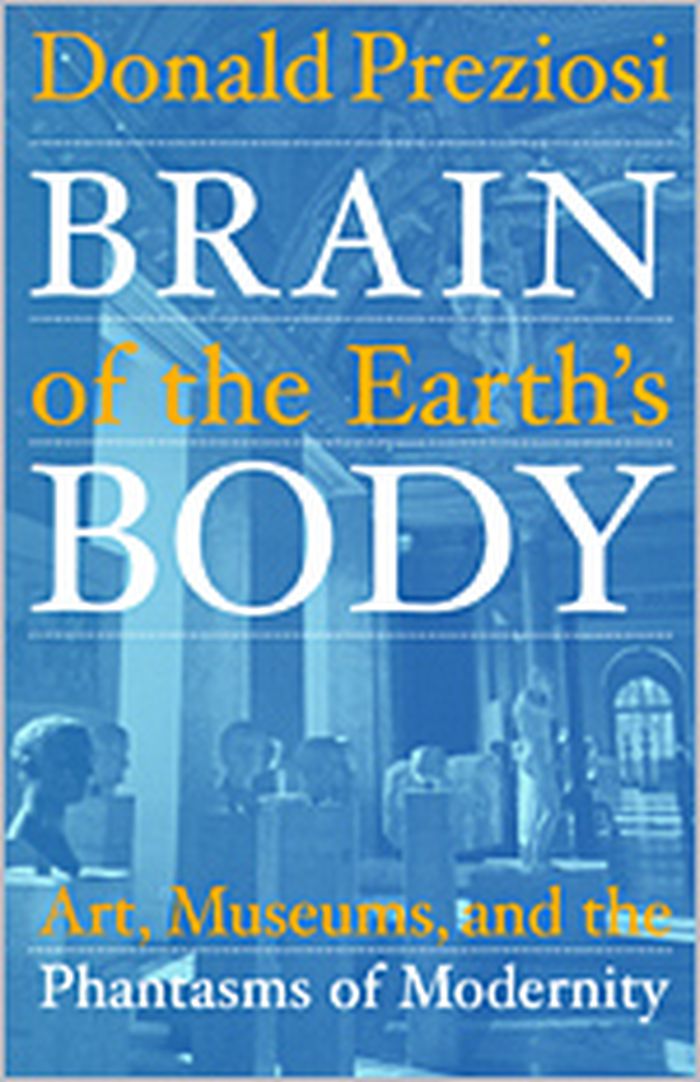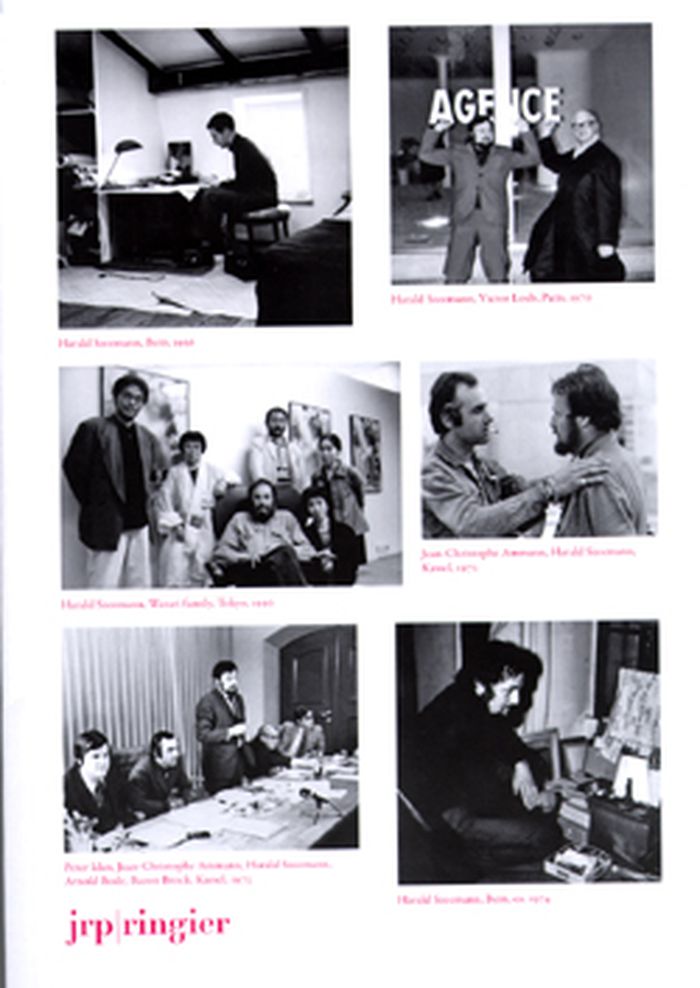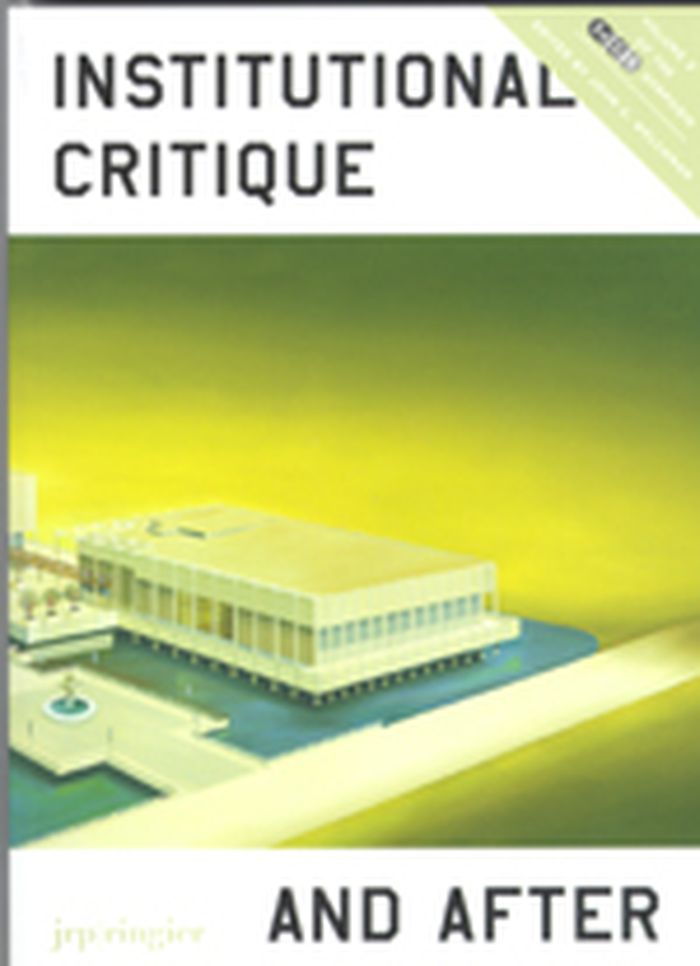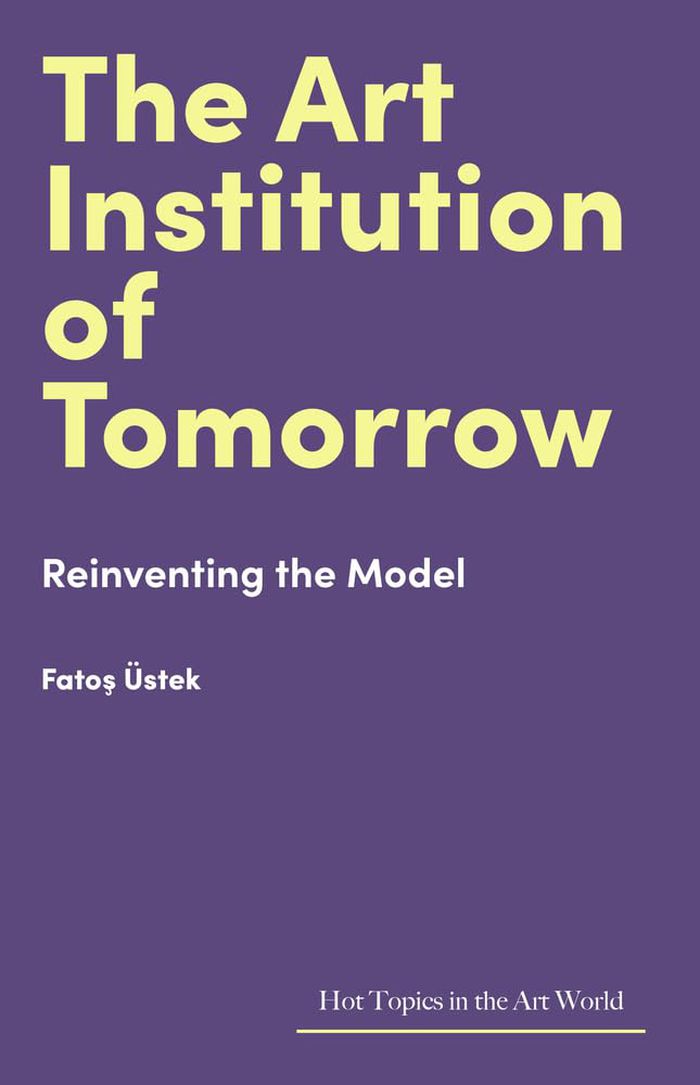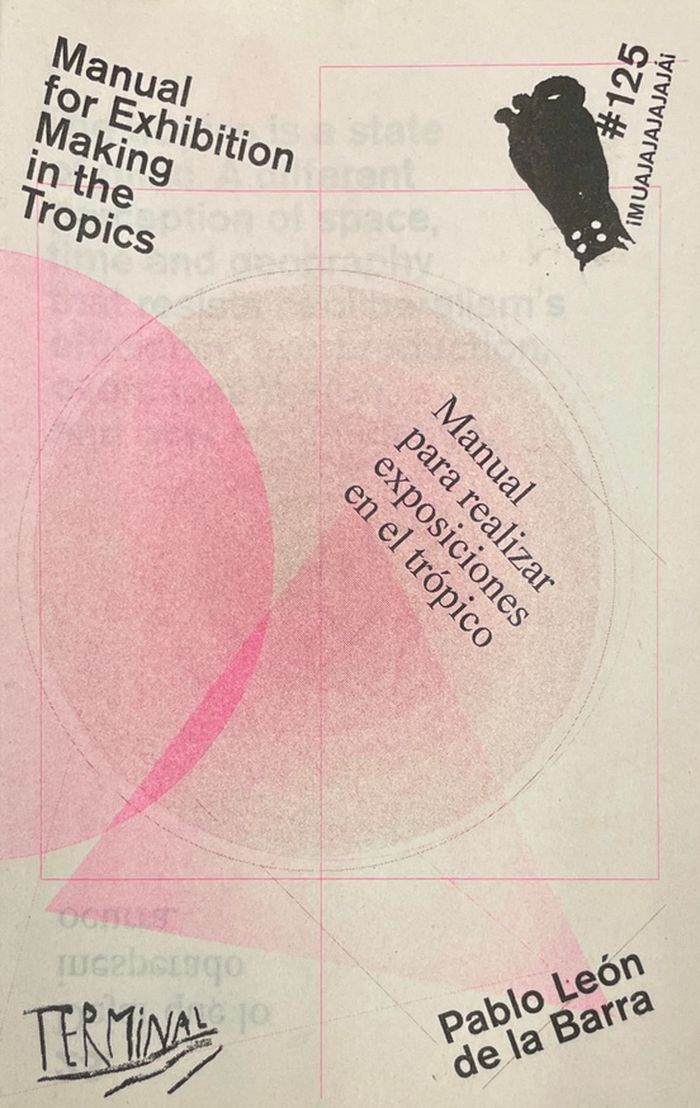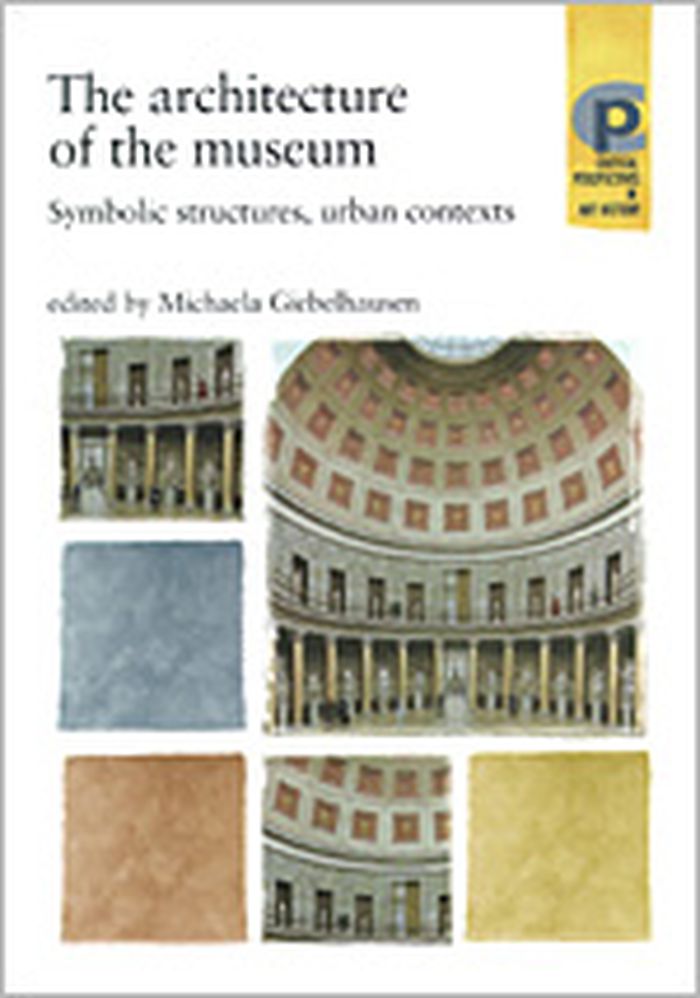$24.95
(available to order)
Summary:
What begins as a meditation on "the museum" becomes, in this book, a far-reaching critical examination of how art history and museums have guided and controlled not only the way we look at art but the ways in which we understand modernity itself. Originally delivered as the 2001 Slade Lectures in the Fine Arts at Oxford University, the book makes its deeply complex(...)
Brain of the earth's body : art, museums and the phantasms of modernity
Actions:
Price:
$24.95
(available to order)
Summary:
What begins as a meditation on "the museum" becomes, in this book, a far-reaching critical examination of how art history and museums have guided and controlled not only the way we look at art but the ways in which we understand modernity itself. Originally delivered as the 2001 Slade Lectures in the Fine Arts at Oxford University, the book makes its deeply complex argument remarkably accessible and powerfully clear. Concentrating on a period from the beginning of the nineteenth century to the beginning of the twentieth, Donald Preziosi presents case studies of major institutions that, he argues, have defined--and are still defining--the possible limits of museological and art historical theory and practice. These include Sir John Soane's Museum in London, preserved in its 1837 state; the Crystal Palace Exhibition of 1851; and four museums founded by Europeans in Egypt in the late nineteenth century, which divided up that country's history into "ethnically marked" aesthetic hierarchies and genealogies that accorded with Europe's construction of itself as the present of the world's past, and the "brain of the earth's body." Through this epistemological and institutional archaeology, Preziosi unearths the outlines of the more radical Enlightenment project that academic art history, professional museology, and art criticism have rendered marginal or invisible. Finally, he sketches a new theory about art, artifice, and visual signification in the cracks and around the margins of the "secular theologisms" of the globalized imperial capital called modernity.
Museology
$30.00
(available to order)
Summary:
We owe our idea of the contemporary exhibition to Harald Szeemann--the first of the jet-setting international curators. From 1961 to 1969, he was Curator of the Kunsthalle Bern, where in 1968 he had the foresight to give Christo and Jeanne-Claude the opportunity to wrap the entire museum building. Szeemann's groundbreaking 1969 exhibition When Attitudes Become Form, also(...)
Museology
March 2008, Berlin, Dijon, New York, Manchester
Harald Szeemann Individual Methodology
Actions:
Price:
$30.00
(available to order)
Summary:
We owe our idea of the contemporary exhibition to Harald Szeemann--the first of the jet-setting international curators. From 1961 to 1969, he was Curator of the Kunsthalle Bern, where in 1968 he had the foresight to give Christo and Jeanne-Claude the opportunity to wrap the entire museum building. Szeemann's groundbreaking 1969 exhibition When Attitudes Become Form, also at the Kunsthalle, introduced European audiences to artists like Joseph Beuys, Eva Hesse, Richard Serra and Lawrence Weiner. It also introduced the now-commonplace practice of curating an exhibition around a theme. Since Szeemann's death in 2005, there has been research underway at his archive in Tessin, Switzerland. An invaluable resource, this volume provides access to previously unpublished plans, documents and photographs from the archive, along with important essays by Hal Foster and Jean-Marc Poinsot. There is also an informative interview with Tobia Bezzola--curator at the Kunsthauz Zurich and Szeemann's collaborator for many years. Two of Szeemann's most ambitious exhibitions are presented as case studies: Documenta V (1972) and L'Autre, the 4th Lyon Biennial (1997). A biography, an illustrated chronology of Szeemann's exhibitions and a selection of his writings complete this exhaustive survey.
Museology
Hans Ulrich Obrist : Everything you always wanted to know about curating (but were afraid to ask)
$27.00
(available to order)
Summary:
Everything you ever wanted to know about Hans Ulrich Obrist butwere afraid to ask has now been asked, revealing the truth from the beginning of his career as a young curator in his Zurich kitchen to his recent position as co-director of the Serpentine in London. This book is a "production of reality conversations", otherwise known as interviews. It undertakes the(...)
Hans Ulrich Obrist : Everything you always wanted to know about curating (but were afraid to ask)
Actions:
Price:
$27.00
(available to order)
Summary:
Everything you ever wanted to know about Hans Ulrich Obrist butwere afraid to ask has now been asked, revealing the truth from the beginning of his career as a young curator in his Zurich kitchen to his recent position as co-director of the Serpentine in London. This book is a "production of reality conversations", otherwise known as interviews. It undertakes the impossible: pinning down this peripatetic curator, and affirming the wisdom of an artist who told Obrist "don't go" when he contemplated leaving the art world for other fields. Interviews by Jean Max Colard, Robert Fleck, Jefferson Hack, Nav Haq, Sophia Krzys Acord, Brendan McGetrick, Ingo Niermann, Paul O'Neill,Philippe Parreno & Alex Poots, Juri Steiner, Gavin Wade, et al. Foreword by Tino Sehgal, afterword by Yona Friedman.
Museology
Institutional critique
$29.00
(available to order)
Summary:
This contemporary reassessment of the Institutional Critique movement, launched in the late 1960s by artists including Michael Asher and Hans Haacke, grew out of a symposium held at the Los Angeles County Museum of Art. It looks at Institutional Critique's central aim, the exposure and ironization of the structures and logic of museums and art galleries, and recent(...)
Institutional critique
Actions:
Price:
$29.00
(available to order)
Summary:
This contemporary reassessment of the Institutional Critique movement, launched in the late 1960s by artists including Michael Asher and Hans Haacke, grew out of a symposium held at the Los Angeles County Museum of Art. It looks at Institutional Critique's central aim, the exposure and ironization of the structures and logic of museums and art galleries, and recent developments that engage with and echo it. IC has been raised again by Andrea Fraser, Renee Green and Fred Wilson, among others, and has been vigorously reoriented in recent years to address issues such as globalization. Contributors include Alexander Alberro, Mike Kelley, Hans Haacke, Lauri Firstenberg, Andrea Fraser, Renee Green and others.
Museology
Curating Subjects
$36.00
(available to order)
Summary:
This book is a welcome addition to he growing literature about exhibition making. Moving away from autobiographical, first person narratives, Curating Subjects instead invites its broad range of contributors to comment upon the curatorial endeavours of others. Conflating and colliding the past and the present with possible futures this book unfolds as an idiosyncratic(...)
Curating Subjects
Actions:
Price:
$36.00
(available to order)
Summary:
This book is a welcome addition to he growing literature about exhibition making. Moving away from autobiographical, first person narratives, Curating Subjects instead invites its broad range of contributors to comment upon the curatorial endeavours of others. Conflating and colliding the past and the present with possible futures this book unfolds as an idiosyncratic conversation that is at once informative, entertaining, and often revealing.
Museology
$66.99
(available to order)
Summary:
Nina Mö ntmann's timely book extends the decolonisation debate to the institutions of contemporary art. In a thoughtfully articulated text, illustrated with pertinent examples of best practice, she argues that museums and galleries of contemporary art have a responsibility to "decenter" their institutions, removing from their collections, exhibition policies and(...)
Decentring the museum: Contemporary art institutions and colonial legacies
Actions:
Price:
$66.99
(available to order)
Summary:
Nina Mö ntmann's timely book extends the decolonisation debate to the institutions of contemporary art. In a thoughtfully articulated text, illustrated with pertinent examples of best practice, she argues that museums and galleries of contemporary art have a responsibility to "decenter" their institutions, removing from their collections, exhibition policies and infrastructures a deeply embedded Euro-centric cultural focus with roots in the history of colonialism. In this, she argues, they can learn from the example both of anthropological museums (such as the Humboldt Forum in Berlin and the British Museum), which are engaged in debates about the colonial histories of their collections, and of small-scale art spaces (such as La Colonie in Paris or Savvy Contemporary in Berlin), which have the flexibility to initiate different kinds of conversation – for example, by programming exhibitions and events in collaboration with local diasporic communities from the global south.
Museology
$62.00
(available to order)
Summary:
Artificial intelligence is becoming an increasingly important topic in the cultural sector. While museums have long focused on building digital object databases, the existing data can now become a field of application for machine learning, deep learning and foundation model approaches. This goes hand in hand with new artistic practices, curation tools, visitor analytics,(...)
AI in museums: Reflections, perspectives and applications
Actions:
Price:
$62.00
(available to order)
Summary:
Artificial intelligence is becoming an increasingly important topic in the cultural sector. While museums have long focused on building digital object databases, the existing data can now become a field of application for machine learning, deep learning and foundation model approaches. This goes hand in hand with new artistic practices, curation tools, visitor analytics, chatbots, automatic translations and tailor-made text generation. With a decidedly interdisciplinary approach, the volume brings together a wide range of critical reflections, practical perspectives and concrete applications of artificial intelligence in museums, and provides an overview of the current state of the debate.
Museology
$46.99
(available in store)
Summary:
''The Art Institution of Tomorrow'' is a unique manifesto for raising the standard of institutional practices across the world. It suggests that existing art institutions are not equipped to deal with the radical social, economic and environmental change we are living through and engage with advancement in the arts, and that unless they re-focus on their core purpose and(...)
The art institution of tomorrow: Reinventing the model
Actions:
Price:
$46.99
(available in store)
Summary:
''The Art Institution of Tomorrow'' is a unique manifesto for raising the standard of institutional practices across the world. It suggests that existing art institutions are not equipped to deal with the radical social, economic and environmental change we are living through and engage with advancement in the arts, and that unless they re-focus on their core purpose and fundamentally transform their organisational structure and operational models, they will start to lose their relevance and influence.
Museology
$13.50
(available to order)
Summary:
"1. The tropics is a state of mind. A different perception of space, time and geography that resists neoliberalism’s efficiency, overproduction, overconsumption, and over accumulation."
Manual for exhibition making in the Tropics #125
Actions:
Price:
$13.50
(available to order)
Summary:
"1. The tropics is a state of mind. A different perception of space, time and geography that resists neoliberalism’s efficiency, overproduction, overconsumption, and over accumulation."
Museology
$43.95
(available to order)
Summary:
Every city has at least one, and great cities often have more. From the Louvre to the Bilbao Guggenheim, the museum has had a long-standing relationship with the city. This ground-breaking volume examines the meaning of museum architecture in the urban environment, considering important issues such as forms of civic representation, urban regeneration, cultural tourism and(...)
The architecture of the museum : symbolic structures, urban contexts
Actions:
Price:
$43.95
(available to order)
Summary:
Every city has at least one, and great cities often have more. From the Louvre to the Bilbao Guggenheim, the museum has had a long-standing relationship with the city. This ground-breaking volume examines the meaning of museum architecture in the urban environment, considering important issues such as forms of civic representation, urban regeneration, cultural tourism and the museumification of the city itself. Bringing together an international group of distinguished scholars from a range of disciplines, this volume bridges the gap between museum studies and traditional architectural history. The contributors explore the conceptual architectural frameworks that govern the museum's diverse symbolic structures and focus attention on the complex ways in which museums function in the city. Ranging from the 17th century to the present day, the detailed and thoroughly researched case studies are drawn from Great Britain, continental Europe, South America and Australia.
Museology
